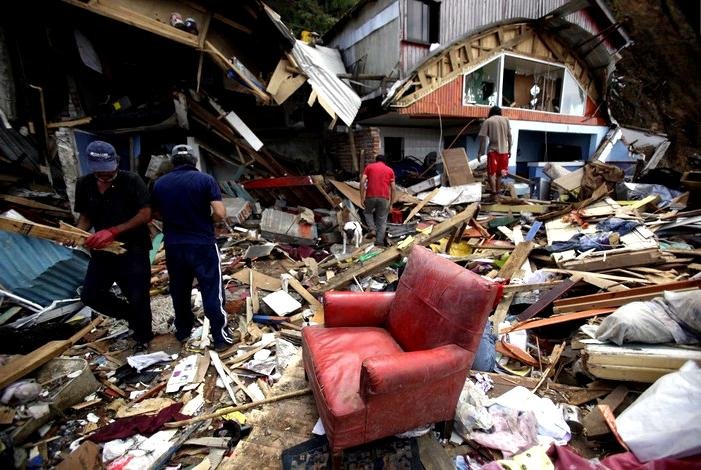
The difference is just about one-millionth of a second.
Richard Gross, a scientist at NASA's Jet Propulsion Laboratory in Pasadena, Calif., and colleagues calculated that Saturday's quake shortened the day by 1.26 microseconds. A microsecond is one-millionth of a second.
The length of a day is the time it takes for the planet to complete one rotation -- 86,400 seconds or 24 hours.
An earthquake can make Earth rotate faster by nudging some of its mass closer to the planet's axis, just as ice skaters can speed up their spins by pulling in their arms. Conversely, a quake can slow the rotation and lengthen the day if it redistributes mass away from that axis, Gross said Tuesday.
Gross said the calculated changes in the length of the day are permanent. So a bunch of big quakes could add up to make the day shorter, "but these changes are very, very small." So small, in fact, that scientists can't record them directly. Gross said actual observations of the length of the day are accurate to five-millionths of a second. His estimate of the effect of the Chile quake is less than a quarter of that span.
"I'll certainly look at the observations when they come in," Gross said, but "I doubt I'll see anything."
According to some geologists and scientists, we are in the middle of an 11,500 year cycle signalling the beginning of major climate changes. The start of the cycle is marked with a Polar reversal, increased volcanic activity, massive earthquakes, tsunamis and powerful hurricanes. the last ice age ocurred 11,500 years ago, and what we are now experiencing happened then as well.
In the last year, the earth experienced the largest three earthquakes in the last two hundred years. Underwater volcanic activity and earthquakes have gone up 88% over the last three years. Continental earthquakes have gone up by 62% during the same time frame. The rate of increase of these earthquakes and volcanic activity is staggering. The magnetic North pole is already moving. Many scientists believe that we can thank the December 26, 2004 earthquake and tsunami for the beginning of this change. the North pole has moved from Northern Canada and is heading in the direction of Siberia.
Photo: Megan Rossman and Dyan Elovich

